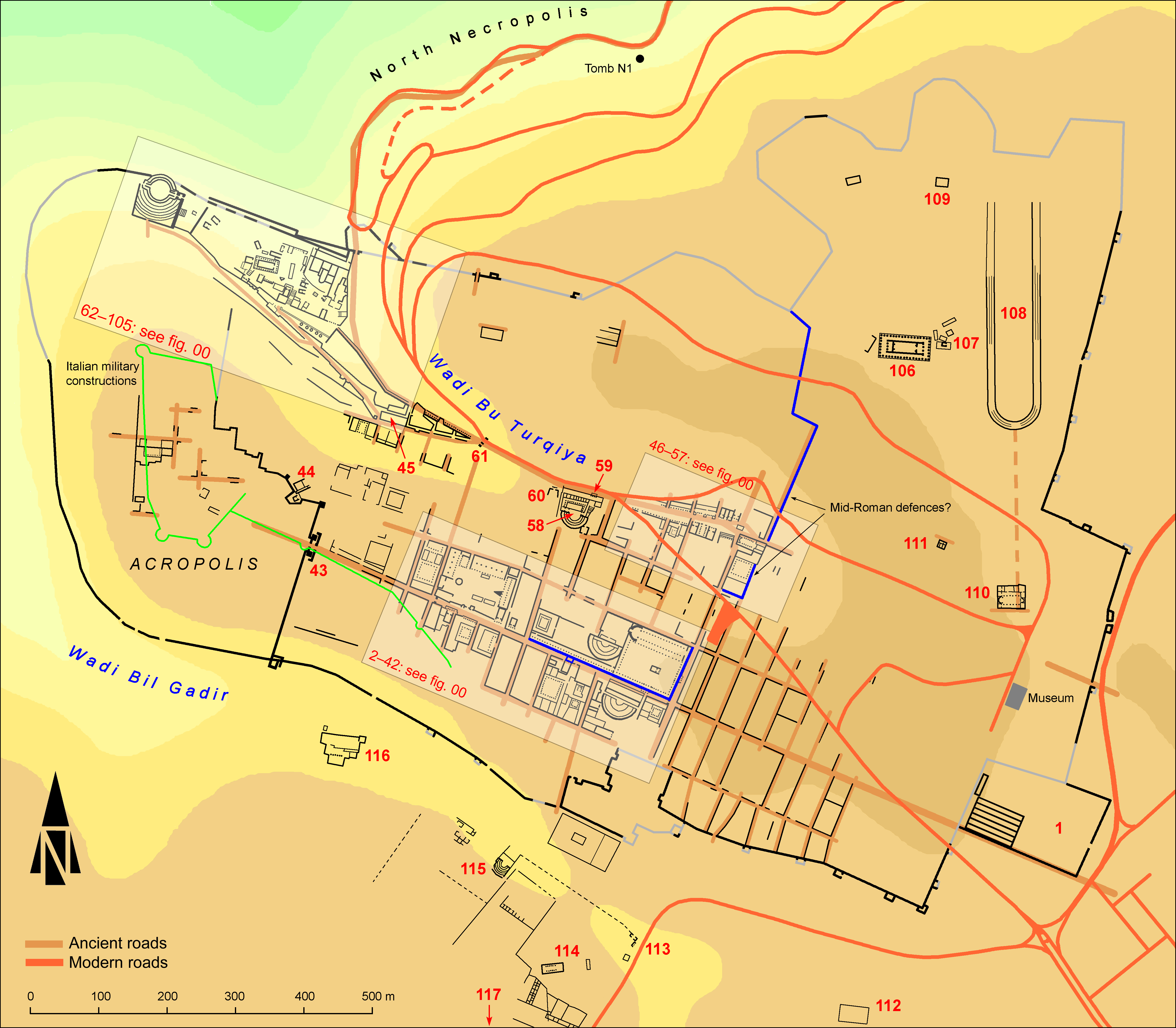EpiDoc XML:
IGCyr0633002
Trismegistos ID:
6101
Source description
Support: Two joining fragments of a white-blue marble base broken at right (fragment a w: 0.08 × h: 0.07 × d: 0.095; fragment b w: 0.175 × h: 0.155 × d: 0.30).
Layout: Inscribed on the face.
Letters: 0.019; small omicron 0.012; sigma with four slanting strokes.
Date: Between 240 and 220 BC (prosopography).
Findspot: Found before 1956 at Cyrene ➚: exact findspot unrecorded.
Place of origin: Findspot.
Last recorded location: Cyrene Museum, 15 (fragment a) and 7 (fragment b). Seen by C. Dobias-Lalou in 1979 in Shahat: Cyrene Museum.
Text constituted from: Transcription from stone (CDL).
Bibliography
Fraser 1958, pp. 111-112, n. 4, pl. XII, 4, whence SEG, 18.734; Fraser 1972 II, p. 191, footnote 85; Laronde 1987, p. 417, whence SEG, 38.1882; IGCyr 063300 ➚. Cf. Marquaille 2003, and Dobias-Lalou, BE, 2005.620, whence SEG, 53.2028; Cigaina – Vitale 2017, pp. 93-96, whence SEG, 67.1480; Rosamilia 2018, pp. 281-282; Rosamilia 2023, p. 355, number 78 (text).
Text
Apparatus
1: [τὸν λιβυάρχαν?] Laronde 1987: [Μακεδόνα?] Fraser 1958
4: κα[ὶ τὰ τέκνα αὐτῶν] (vac. 20?) Fraser 1958, Laronde 1987, IGCyr: κα[ὶ τὰ τέκνα καὶ τὰν ἑαυτῶν πόλιν?] Rosamilia 2023
French translation
(scil. La statue de) Pélops fils de Pélops, [le gouverneur de Libye?] a été consacrée [par les Cyrénéens] en raison de sa valeur [et de son dévouement envers le roi] Ptolémée et [la reine Bérénice, Dieux] Evergètes, ainsi [que leurs enfants].
English translation
[The statue of] Pelops son of Pelops, [the governor of Libya?] was dedicated [by the Cyrenaeans] on account of his valour [and goodwilling towards king] Ptolemy and [queen Berenice, Gods] Euergetai, as well as [their chidren].
Italian translation
[La statua di] Pelops figlio di Pelops, [il governatore della Libia?] è stata dedicata [dai Cirenei] in considerazione del suo valore [e della sua dedizione verso il re] Tolemeo e [la regina Berenice, Dèi] Evergeti, e [dei loro figli].
Arabic translation
أُهْدِيَّ (تمِثال) بيلوبس بن بيلوبس، [حاكم ليبيا؟ من قبل الكيرينيين] لأفضاله [ونواياه الحسنة تجاه الملك] بتوليميوس (بطليموس) [والملكة بيرنيكي، المؤلهان] إفيرغيتيس ، وكذلك [ابنائِهم].
Commentary
Fraser 1958, published only fragment b, but was able to complete the name of Pelops, who was already known from different sources. However he later heard about the missing fragment a, as appears from the mentioned footnote in Fraser 1972.
At l. 1, Fraser 1958, after having considered the titles στραταγός or Λιβυάρχης, preferred e.g. Μακεδόνα. Laronde 1987 reinforced Λιβυάρχας which fits better the space available and might also be restored in IGCyr0631002 and IGCyr0632002. Cigaina – Vitale 2017 argue from the coins bearing the mention ΚΟΙΝΟΝ and from the long remanence of that sort of organization that the restoration is valuable in all three inscriptions.
The terminus ante quem is based on the fact that Pelops should have been governor of Cyrenaica before assuming the same duty at Cyprus from 217 to 209 BC; the terminus post quem, on the fact that the eldest son of the royal couple was born ca. 244 BC. Pelops was related throught marriage with another officer of high rank in Alexandria who played an important role at Cyrene, namely Eteoneus son of Eteoneus, as argued by Rosamilia 2018, see IGCyr0967002.
The inventory number shows that the stone was already part of the epigraphic collection at the time of the reorganization of the Cyrenaean antiquities after World War II care of Goodchild (from 1956 on) and before Fraser observed it. It may well have been found already during the last years of the Italian period.
CC BY-NC-SA 4.0 Deed Attribution-NonCommercial-ShareAlike 4.0 International License.
All citation, reuse or distribution of this work must contain a link back to DOI: https://doi.org/10.60760/unibo/igcyrgvcyr2 and the filename (IGCyr000000 or GVCyr000), as well as the year of consultation.

